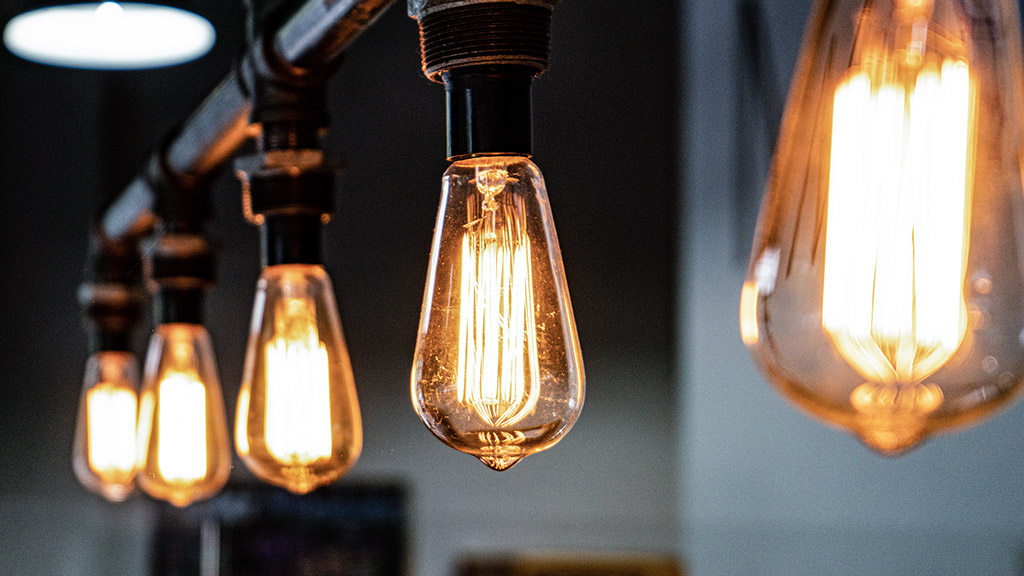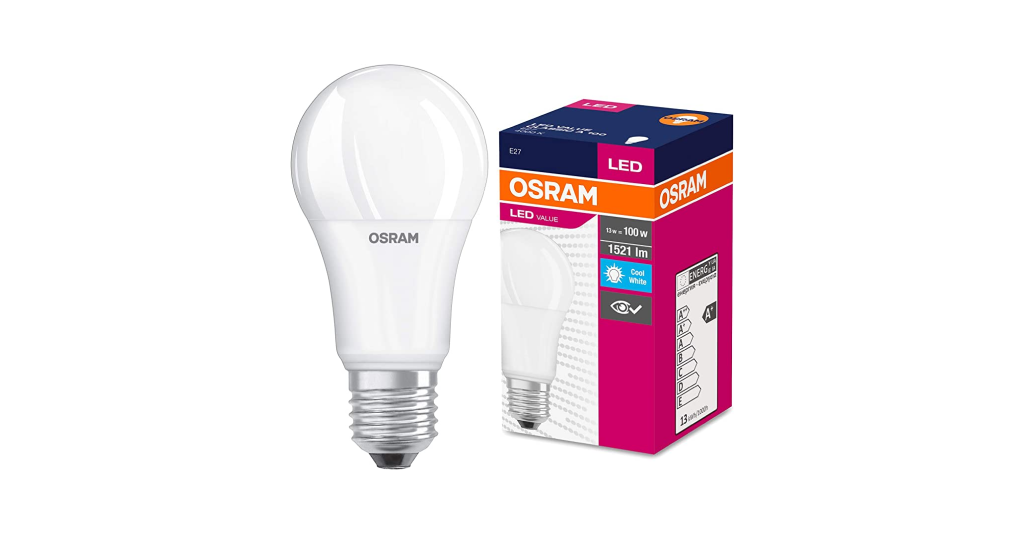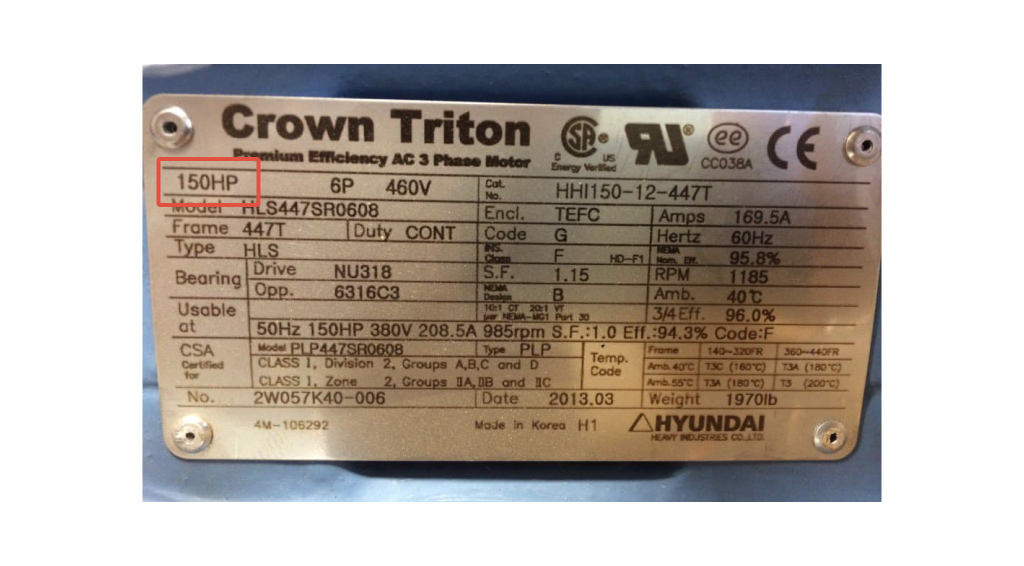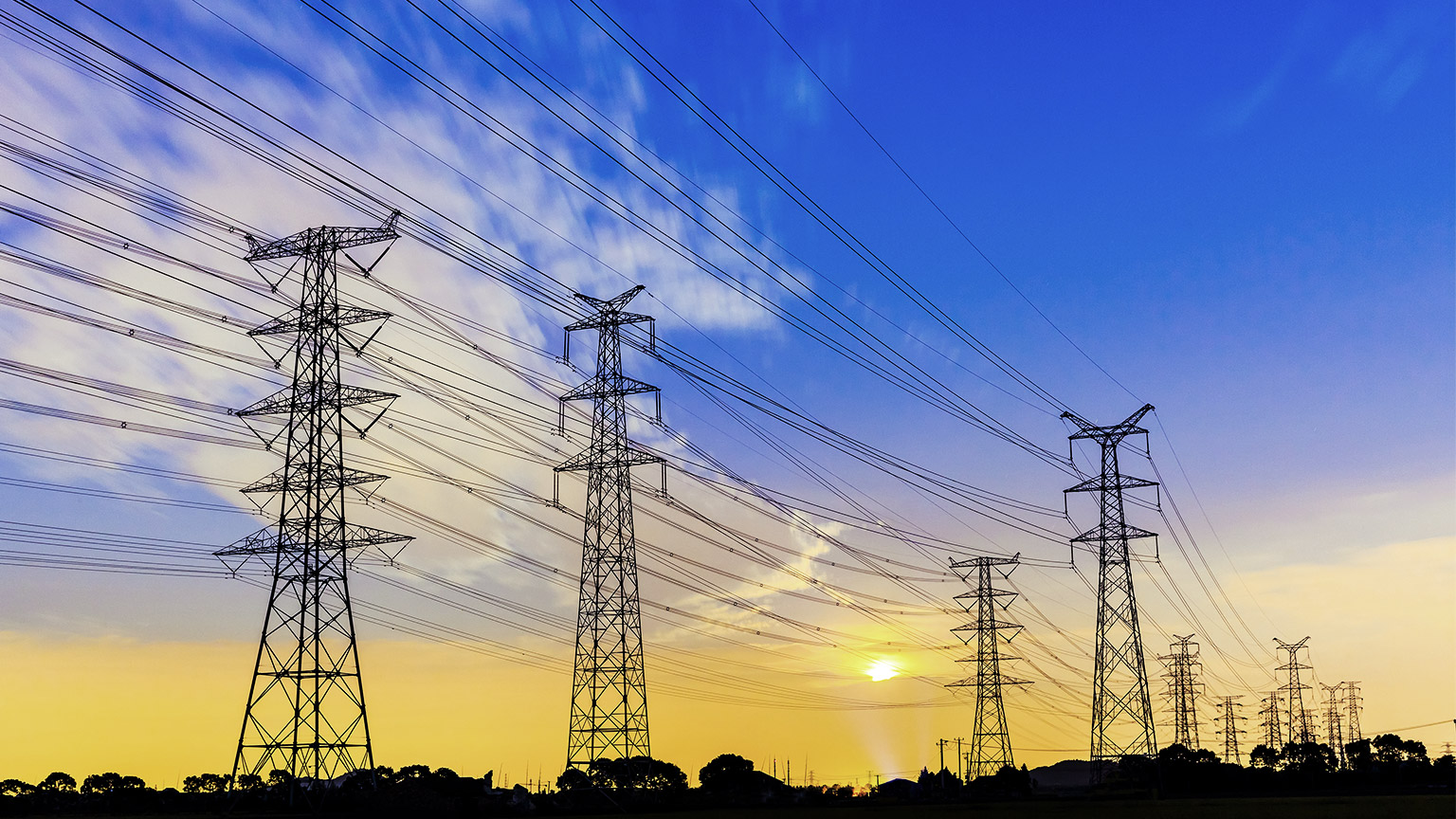In this topic, we will look at Ohm’s Law and the following:
- State Ohms law and the formulas associated with it.
- State the formulas for power.
- Explain the relationship between power and energy.
- Calculate electrical values with given parameters.
- Describe how instruments are connected to measure voltage, resistance, current, and power.

What we're covering:
- Ohm's law
- Ohm's law triangle
- Ohm's law practice
Ohm’s law describes the relationship between the three characteristics of the electrical circuit:
- The electron flow (current).
- The resistance to flow in the wire.
- The voltage.
Learn about the relationship between Voltage, Current and Resistance.
Georg Ohm found that, at a constant temperature, the electrical current flowing through a fixed linear resistance is directly proportional to the voltage applied across it, and also inversely proportional to the resistance. This relationship between the Voltage, Current and Resistance forms the basis of Ohm's Law and is shown below.
VOLTAGE = CURRENT x RESISTANCE
V = I × R
where:
V is the potential difference in volts, V.
I is the current in amperes (amps), A.
R is the resistance in ohms, Ω.
Sometimes it is easier to remember the Ohm’s Law relationships by using pictures:
So, with Ohm’s law, if you know two of the three quantities in the equation, you can figure out the value of the missing third one. For example, if you know the volts and the amps, you can use the equation to calculate the value of the resistance flowing through the circuit.
To use the triangle, cover up the missing (unknown) value and you will be left with the simple equation needed to calculate this missing quantity, i.e.
This video explains how to use the triangle if you’re confused.
Example 1 - 3A flows through a 240 V lamp. What is the resistance of the lamp?
R is the value that you are trying to find.
R = 240 ÷ 3
R = 80 Ω
Example 2 - what voltage is applied to a 20 ohm fixed resistor if the current through the resistor is 1.5 amps?
V is the value you are trying to find.
V = 1.5 x 20
V = 30 V
Ohm’s Law is used often so it is important you understand and remember it!
Activity
Use the Ohm’s Law Triangle to calculate the following. Bring your workings to your next class and ask your tutor to check them.
Note: you must work in Ω, V and A for your calculations, so you need to convert some units before starting.
- A fan with resistance of 20 Ω is connected to a power supply. The current flowing through the circuit is 2.5A. What is the voltage of the power supply?
- A resistance of 30 Ω is placed in a circuit with a 90-volt battery. What current flows in the circuit?
- A motor with a resistance of 32 Ω is connected to a voltage source. Four amps of current flows in the circuit. What is the voltage of the source?
- The resistance of an electric stove burner element is 11 ohms. What current flows through this element when it runs off a 220 volt line?
- Determine the current flowing through a car's starter, whose resistance is 60mΩ at 12 V.
- The resistance of a handset is 4000 Ω, Calculate the voltage if the current is 2.5 mA.
- Calculate the resistance value of an electrical conductor if it is connected to a voltage of 12 V and an electric current of 0.3 A passes through it.
- An iron is connected to a 230 V power supply with a current of 5000 mA. Calculate the electrical resistance of the iron.
- What voltage is applied to a 20 ohm fixed resistor if the current through the resistor is 1.5 amps?
- What is the resistance of a lamp connected to a 110 voltage source that draws 2 amps of current?
Activity
Watch the Ohm’s Law Experiment before making a graph of your own.
A student has a resistor of unknown resistance. She places the resistor in series with a power source of variable potential difference. Using an ammeter, she measures the current through the resistor and voltage across the resistor.
Her results look like this:
| Current (A) | 0.22 | 0.47 | 0.85 | 1.05 | 1.50 | 1.80 | 2.00 | 2.51 |
| Voltage (V) | 0.66 | 1.42 | 2.54 | 3.16 | 4.51 | 5.41 | 5.99 | 7.49 |
Plot these figures on the graph after downloading this worksheet.
What mathematical relationship do you see between voltage and current in this simple circuit? How could you calculate resistance from the graph?

What we're covering:
- watts
- prefixes
- electrical power rating
Electrical power is a measure of how much electric energy is converted to another form of energy (such as motion, heat, or light) over a set amount of time.
The watt is the SI unit of power and is equivalent to one joule per second.
The watt is also defined as the rate at which work is done when a current of one ampere, flows through a network with an electrical potential difference of one volt.

Watch the following videos discussing Electric Power.
Power can be calculated by multiplying current (I) by voltage (V).
POWER = CURRENT x VOLTAGE
Where:
- P is the power in watts (W)
- I is the current in amperes (A)
- V is the potential difference in volts (V)
The three quantities can be written into the Power Triangle, giving us three different combinations to find the various individual quantities:
Note - If the calculated power is a positive value, then the component is consuming or using power, but if the calculated power is negative, the component is generating power, such as a battery or generator.
It’s very common to see "watts" preceded by one of the standard SI metric prefixes: microwatts (µW), milliwatt (mW), kilowatt (kW), megawatt (MW), and gigawatt (GW) are all common depending on the situation. Ensure you adjust any calculations where the units are not in the standard units (W, V and A).
| Prefix Name | Prefix Abbreviation | Weight |
|---|---|---|
| Nanowatt | nW | 10-9 |
| Microwatt | µW | 10-6 |
| Milliwatt | mW | 10-3 |
| Watt | W | 100 |
| Kilowatt | kW | 103 |
| Megawatt | MW | 106 |
| Gigawatt | GW | 109 |
Activity
Complete the questions below and then email or message your tutor for the answers.
- Calculate the power of a bulb that consumes 25 A of current when it is connected to a 12 V battery.
- What is the current when a 60 W lamp is connected to 120 V?
- What is the power when a voltage of 120 V drives a 2 A current through a device?
- A microwave oven transfers 4000 Joules of energy in 5 seconds. Calculate the microwave oven’s power, stating the unit of power.
- How much current does a 100 W lamp draw when connected to 120 V?
- Calculate the power of torch bulb rated at 2.5V and 500 mA.
- Calculate the voltage when part of an electric circuit consumes energy at 6 W while drawing a current of 3 A.
- An electric motor draws 150 amperes of current while operating at 240 volts. What is the power rating of this motor?
Electrical Power Rating
Electrical devices convert one form of power into another. For instance, an electrical motor will convert electrical energy into a mechanical force, while an electrical generator converts mechanical force into electrical energy. Conventional light bulbs first convert electrical energy into heat, and then into light, whereas LEDs (Light Emitting Diodes) convert electrical energy directly into light.
Electrical components are given a “power rating” in watts which indicates the maximum rate at which the component converts the electrical power into other forms of energy.
For example, a ¼ W resistor, a 100W light bulb etc.

Some electrical devices such as electric motors have a power rating in the old measurement of “Horsepower” or HP. The relationship between horsepower and watts is given as: 1HP = 746W.

The higher power value or rating of a component, the more electrical power it will consume. It is important to understand the difference between a kW and a kWh.
What's the difference between kW and kWh?
It's easy to get kilowatt (kW) and kilowatt-hours (kWh) mixed up when talking about energy consumption. The main difference is in what they measure. To put it simply, a kilowatt is a measure of power and a kilowatt-hour is a measure of energy; power is the rate at which something uses energy, and energy (power x time) is the capacity to do the work.
Activity
Complete the exercises below then email or message your tutor for the answers.
- A 750 W hairdryer is used for 15 minutes.
- Calculate the kWh used.
- Calculate the cost to use the hairdryer for 15 minutes every day for 1 year @ $0.28/kWh.
- A 615 W refrigerator runs 24h/day.
- Calculate the cost to run it for one week.
- Calculate the cost to run it for one year. (@ $0.28/kWh.)
- A current of 11 A at 240 V flows through an electric range. If it is used an average of 1 hour/day, calculate the:
- Watts used by the range.
- kWh used per month (30 days).
- Cost to run the range for one year at weekday peak rate (@ $0.37/kWh.)
- Calculate the kW rating of an electrical motor rated at 7.5 HP. Show your working and round your answer to 2 decimal places. (Recall 1 HP = 746 kW)
- The following table shows the average electrical consumption of several home appliances. Use the information in the table, to calculate the number of kW hours used and the cost of electricity used. (Assume the unit cost of electricity is $0.28.) Round all numbers to 3 decimal places. You can write your ideas on a piece of paper.
| Appliance | Hours Used | Energy (kW hours) | Cost ($) |
|---|---|---|---|
| 7 kW heat pump | 3 | ||
| 6 kW electric stove | 1 | ||
| 9 x 14W LED lamps (total 126W) | 6 | ||
| 90W television | 3 | ||
| TOTAL |
Activity
Not all calculations give you a tidy answer. For example:
Calculate the current drawn by an electric dryer that consumes 6.0 x 106 joules of energy when operating at 220V for 30 minutes.
Since 1W = 1J/s, the total power P=
= (6.0 x 106) J x (30 x 60) s
= 1.08 x 1010 W
Using I = P÷V
I = 1.08 x 1010 ÷ 220
I = 4.9 x 107 A (rounded to 2 decimal places)
Your tutor will direct you to these modules at Pathways Awarua to practice your rounding skills.
- N5100 - Approximation and rounding.
- SN5100 - Approximation and rounding.
- TN5100 - Approximation and rounding.
What we're covering:
- steps to follow
- practice exercises
So far, we have discussed relationships between voltages, current, resistance, and power. The Ohm's Law Pie Chart shows a summary of the relationships between these measurable quantities.
Which equation you use depends on what values you are given, or you measure. For example, if you are asked to find the power and you know the values for current and resistance, choose P = I2R.
Here are four steps to follow when using Ohm’s Law Pie Chart.
- Determine what variable you need to solve for: power (P), resistance (R), amps (I), or volts (V).
- Determine what variables you already know: power (P), resistance (R), amps (I), and volts (V).
- Find the formula in which you can plug your two values.
- Solve the equation.
All the possible combinations may seem overwhelming, but don’t forget that they all are combinations of just two equations, Ohm’s Law (V = IR) and Power (P = IV).
For instance:
Given the power formula: P = V x I and Ohm's law: V = I x R
The power formula could be rewritten as P = (I x R) x I by substituting Ohm's law in for the voltage. This simplifies to P = I2R
Alternatively the power formula can be writen as P = Vx V/R by substituting Ohm's law in for current. This simplifies to P = V2/R
Points to note:
- Since all of these terms are people’s names, we always use capital letters.
- Make sure to use compatible units when solving the formula. Convert any measurements with prefixes (like mA, KΩ, μV etc) to the base unit of A, Ω, V and W before calculating the answer, otherwise, you’ll get a result that is much bigger or smaller than you expected.
- These two formulae V √Px R and I= √P/R will be both need brackets inserted.
They should be entered on your calculator as √(P x R) and √(P ÷ R)
Watch
To learn more about where the Power formulae come from watch this set of videos:
Activity
Fill in the blank cells on the following table by selecting the correct formula from the Ohm’s Law pie chart. (Download the worksheet here - answers to be provided at the end of this learning week)
| Known Values | Resistance R Ω |
Current I (A) |
Voltage V (V) |
Power P (W) |
|---|---|---|---|---|
| Current & Resistance | X | X | ||
| Voltage & Current | X | X | ||
| Power & Current | X | X | ||
| Volate & Resistance | X | X | ||
| Power & Resistance | X | X | ||
| Voltage & Power | X | X |
The video explains how to go about doing the different calculations.
Activity
Use the pie chart to help you find the correct formula to answer these questions. In some cases, you will need to do use more than one formula to reach the final answer.
